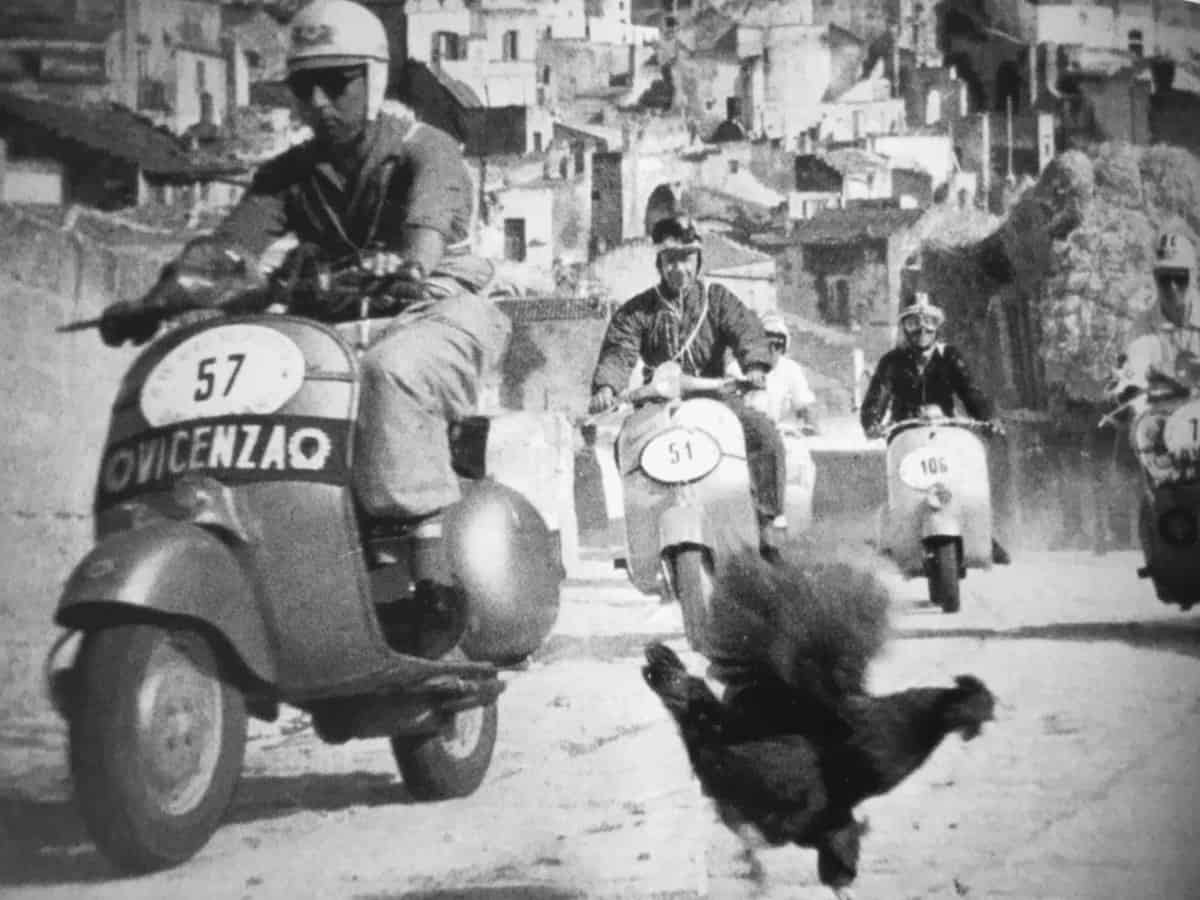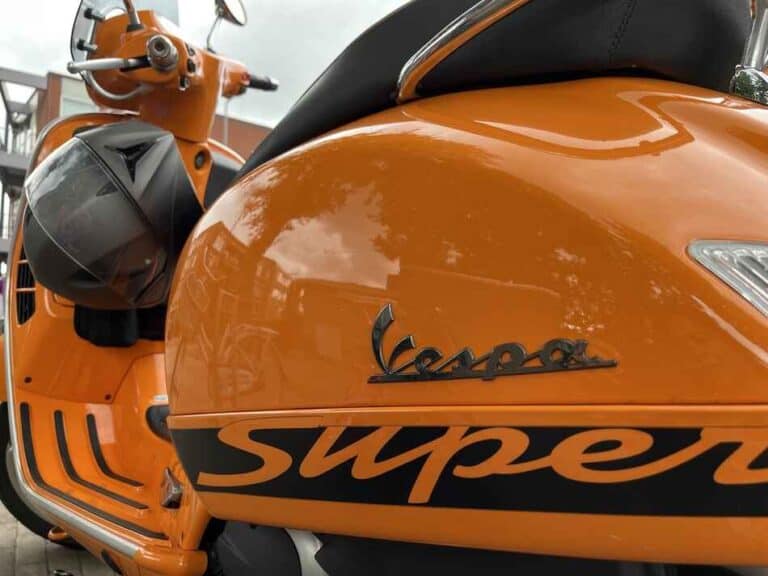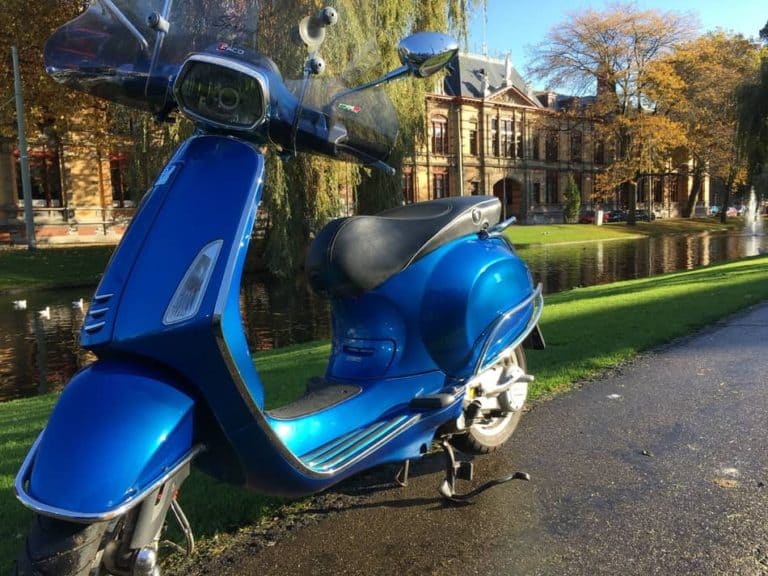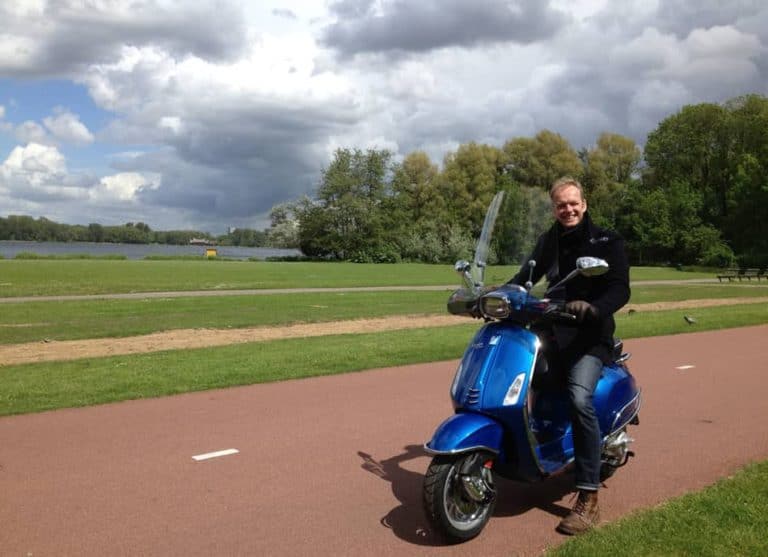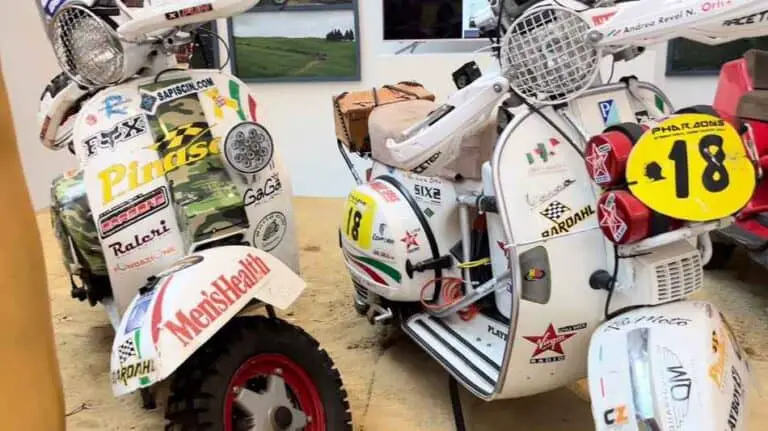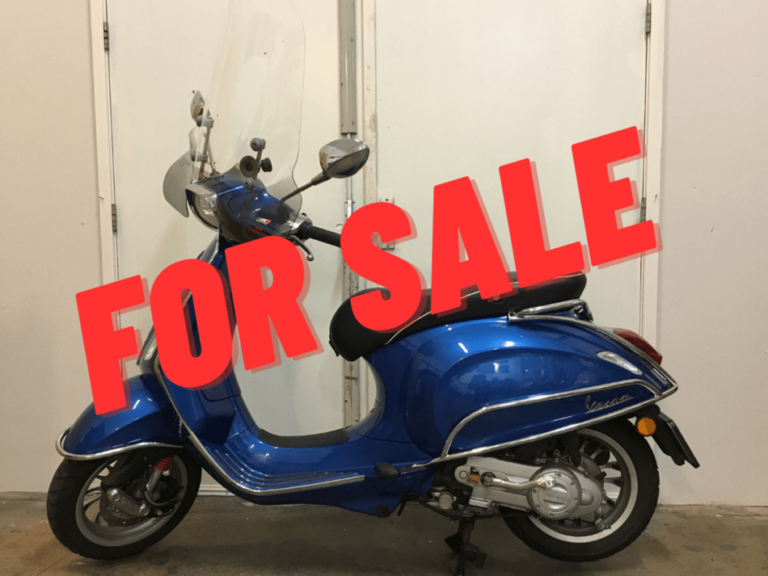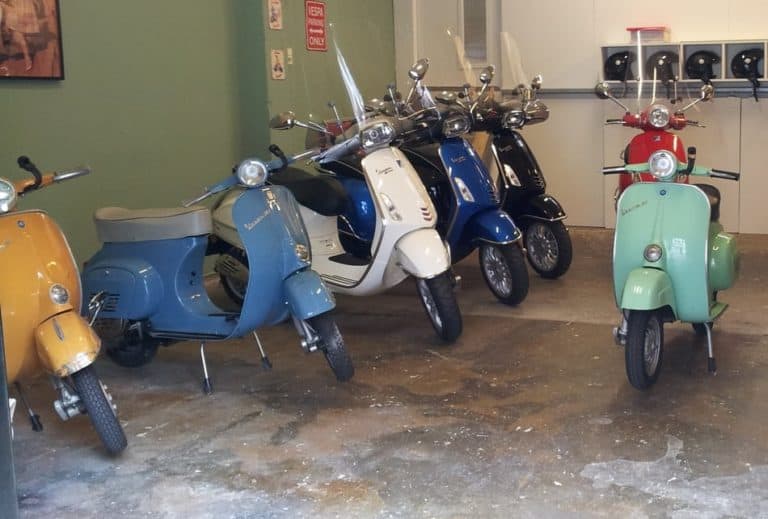Is A Vespa Good For Long Rides?
Vespa has always been used for commuting and getting around the city. But history has shown that a Vespa can take you to all corners of the world.
When we organized tours with our Vespas, the routes would take drivers through the countryside and through little villages where cars have difficulty accessing. We could easily reach 100km/63 miles a day on our 50cc Vespa.
But how about long road trips?
All Vespas have a good quality engine making them ideal. Classic Vespas engines consist of ‘simple’ engineering making quick repairs easier. If comfort is essential then the Vespa GTS series is better for long rides. They have bigger engines 200cc-300cc for speed, better seats, and suspension.
A big engine and speed enable you to make distances and see more in a day. But let’s have a look at other factors that you should take into account when thinking about taking your Vespa out for the day (or more).
Which Vespa model is best for long distances?
All classic and modern Vespa models are good for long distances because they are very reliable, sturdy, and balanced with their monocoque frame. You can take the Vespa on a long road trip as long as you’ve followed the maintenance schedule. Of course, some Vespa models are more comfortable and quicker than others.
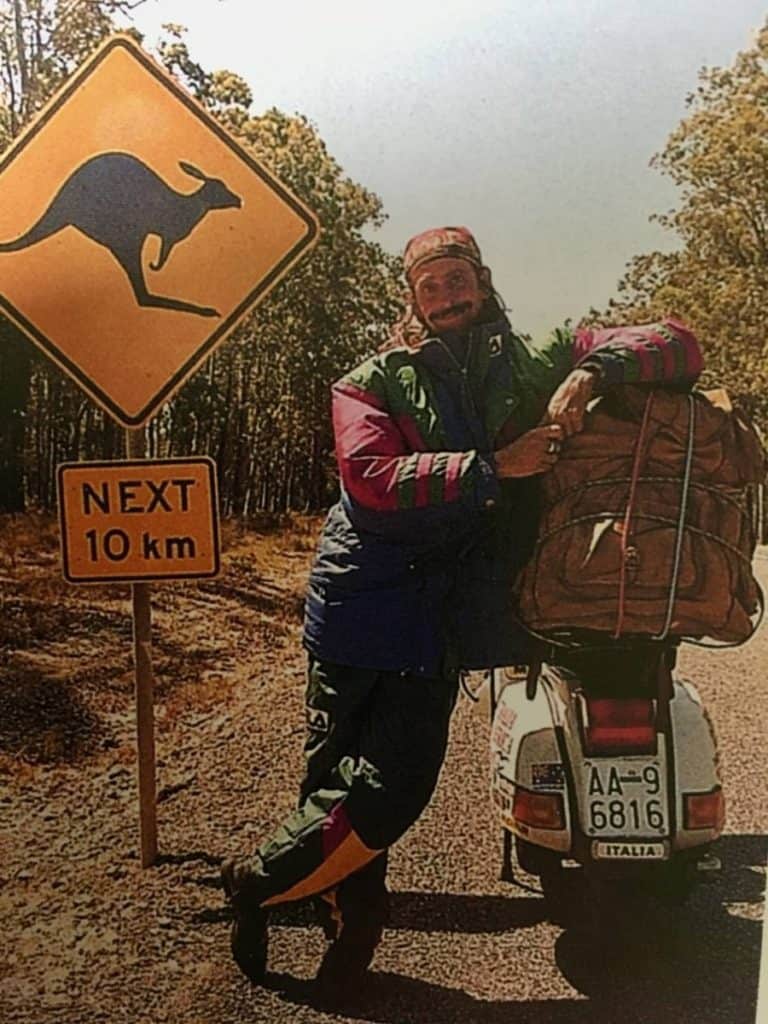
Classic Vespas
When you think about long distances and comfort, you don’t think about classic Vespas immediately, even though many have done so. The most popular and reliable classic Vespas for long distances are the Vespa Rally 180/200 and the Vespa PX 200 series.
The first account of a Vespa traveling long distances was in 1947 when Carlo Masciocchi entered his Vespa 98 in the Gentleman Moto Club of Milan’s Primi Passi event.
In the following years, many more Vespas entered various races and even took part in the Industry Trophy. This event consisted of the Southern Shield race, the 24 Hours race, and the Mille Miglia race. In all of these 3 events the seven Vespas that joined finished without any penalties. Funny enough most of these Vespas were only suited to the city streets than the off roads and other back roads.
In 1953 Pierre Delliere, a sergeant in the French Air Force, started his journey in Saigon and rode his Vespa 125 all the way to Paris in 51 days, covering 9.941 miles/ 16.000 km. The driver and journalist Roberto Patrignani drove his Vespa 150 from Milan to Tokyo in 1964 just in time for the Olympics. It only took him three months while he traveled 8.077 miles/ 13.000 km. Many more Vespisti (Vespa enthusiasts)have taken their Vespas to the different corners of the world.
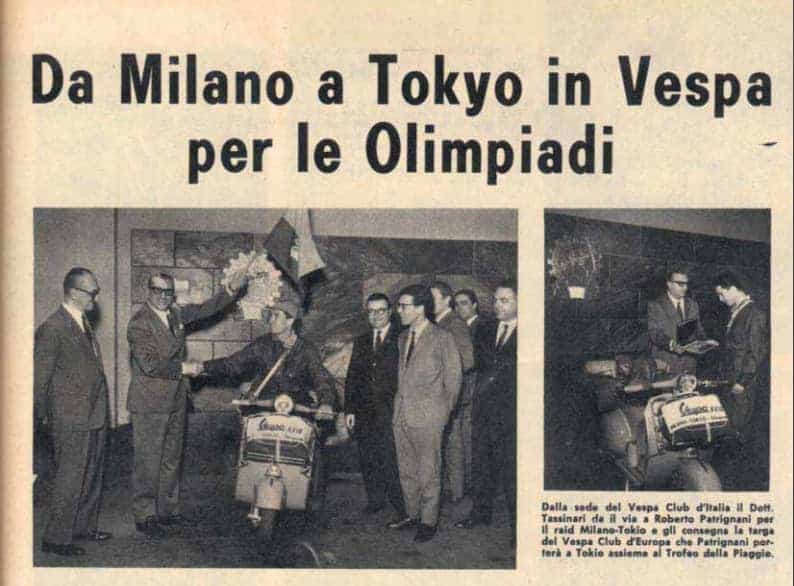
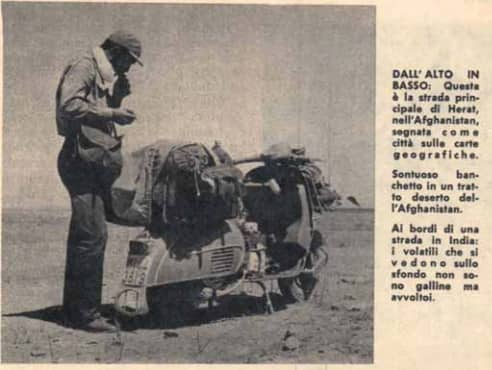
While it is a wonderful adventure to do road trips on your classic Vespa, you have to be aware of what their weight limits are. Too much luggage will affect the engine performance as we explain in the article on Vespa weight limits.
Modern Vespas
For the most comfort, it’s best to choose the modern Vespa with a good engine size such as the Vespa GT(S) 200/250/300, Vespa LX 150, and Vespa Primavera/Sprint 150 series. The top speed for the Vespa GT 200 is 73.9mph (120km/ph) while the Vespa Primavera 50cc maximum speed is 40mph (50km/ph). So it’s easy to take your pick.
Moreover, the Vespa GTS 300 features ASR which monitors the speed of the wheels and reduces the power of the engine when it gets slippery. The latest Vespas come with ABS braking which adds to your safety and comfort too.
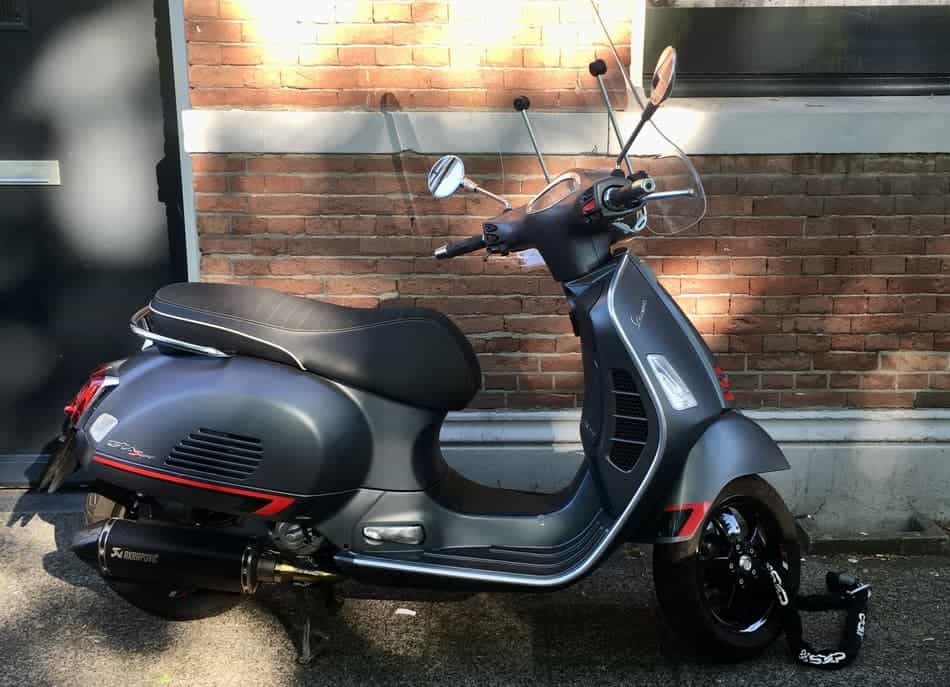
Not only is the engine important for a comfortable driving experience, but you also need to ensure that your luggage is properly stowed for a safe journey. Luckily there are many ways to stow your things on a Vespa. We have listed all kinds of tips in the following article.
What to check before going long distances with your Vespa?
There are a number of things you can check to make your long-distance trip with your Vespa more comfortable.
Weather condition
Check the weather conditions before heading out. Is it going to rain or shine, how strong is the wind and will it be cold or warm? You will then know what kind of clothing to use and what to bring.
Road conditions
Availability of gas stations and road conditions. Are there any traffic jams, accidents, planned constructions, or speed limits on your route?
If you don’t want to worry about gas stations at all best is to bring some extra fuel flasks and store them under the seat, or glove compartment (depending on the Vespa model) or you can tie them under the luggage rack with clamps.
When taking your classic 2-stroke Vespa our for the day always bring the Castrol 2T oil with you. Better be safe than sorry.
Final Checks
Follow the mnemonic T-CLOCS which stands for (T)Tires and wheels, (C)Controls, (L)Lights and electrics, (O)Oil, and other fluids, (C)Chassis, and (S)Stands. For a thorough checklist of these items have a look at this pdf from the Motorcycle Safety Foundation.
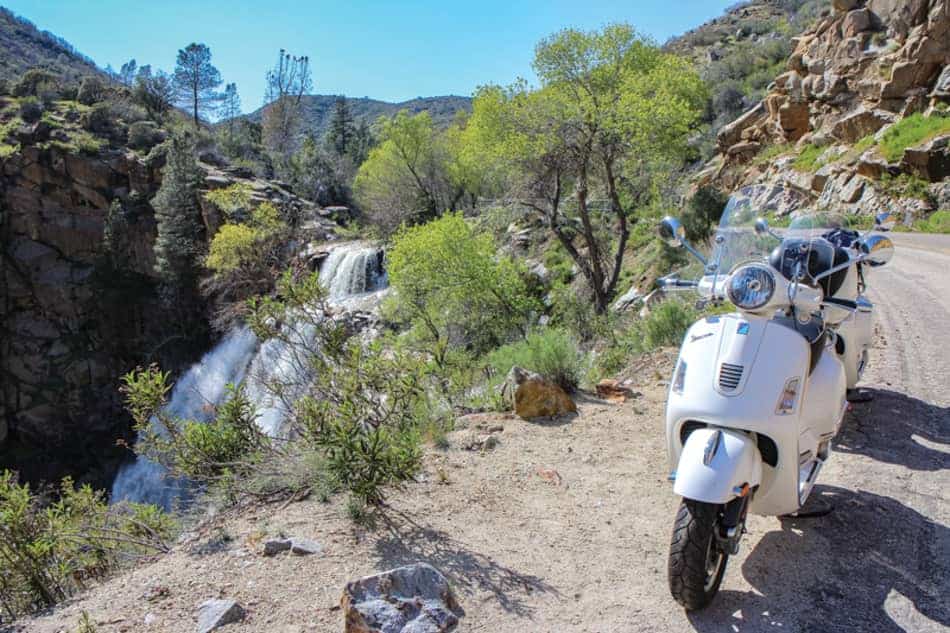
Can you use a Vespa on the highway?
You can legally use a Vespa on the highway or freeway in most states when you have an engine displacement of at least 150cc. Then again best is to use at least 200cc-300cc Vespas so you can keep up with the traffic. The best Vespas for the highway or freeway are the Vespa GTS 200, GTS 250 (73 mph), and the GTS 300 (78 mph) series. Even with headwinds, this will make it easier for you on the highway.
There are a couple of things you might take into consideration in order to drive safely on the highway.
- For the real Vespa feeling, it’s best to avoid the highway or freeway unless it’s just a short ride. Most accidents happen when lanes merge, and people have difficulty seeing you on your Vespa.
- You might consider getting a windscreen too because on the highways the winds can pull and push you too much which makes the ride an unpleasant experience. Especially when crossing overpasses you’ll be surprised where the winds come from.
- Passing trucks can be something you should think of when riding your Vespa on the highway. The winds that they create are something to be careful about.
Best Vespa scooter for a long commute?
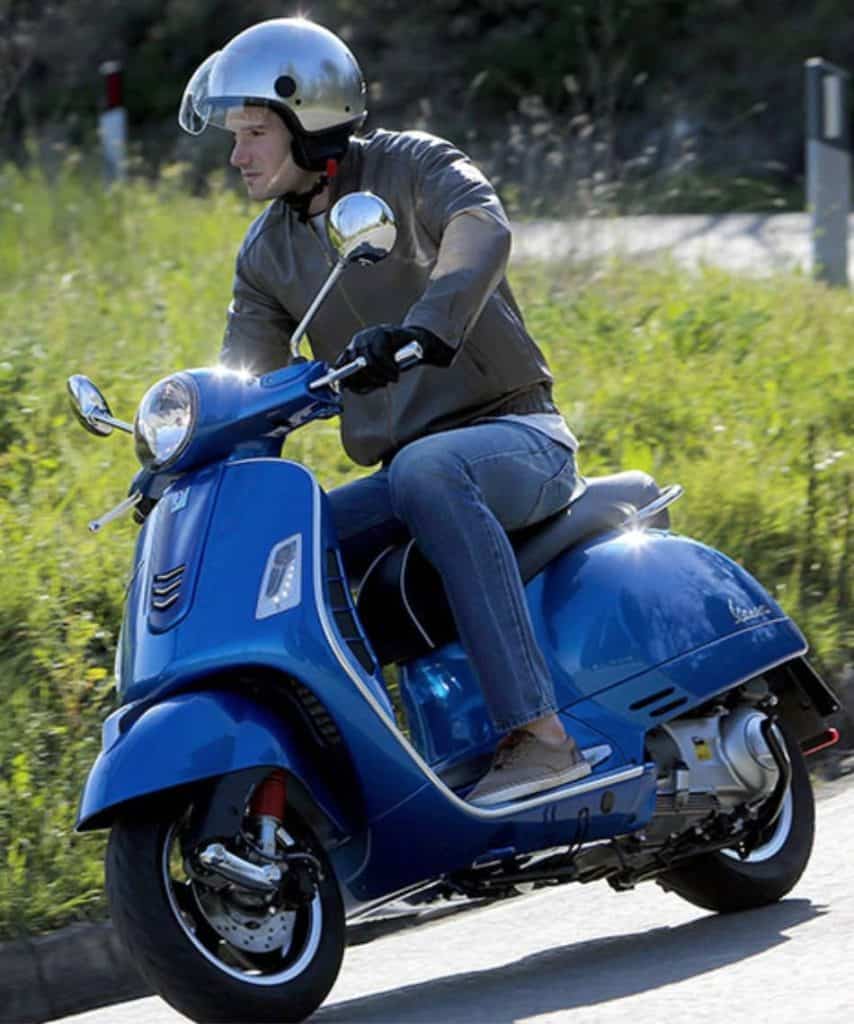
The best Vespa scooters for commuting are the GT(S) 200-300 series because of their bigger engines. When driving mostly on highways then these are the most comfortable ones. If you’re using other types of roads for your commute then any modern Vespa will do as long as you take care of her properly. Keep in mind that commuting with your Vespa also includes different weather conditions so always pack proper rain clothing and keep it under the seat or in the top case if you have one.
It is pretty cold when driving a Vespa in the wintertime. To be very honest, I hardly drive in the wintertime or anywhere below 60F (15C). On a Vespa, it just feels much colder than it actually is. I always distract 41F (5C) from the actual temperature to know how it would feel on a Vespa. For me, the best temperature for riding is at least 68F (20C), which will feel like 59F (15C) on a Vespa.
But luckily if you would like to drive your Vespa in colder conditions, there are a lot of options to make it more comfortable. It’s best to invest in insulated clothing and a Thermoscud so your lower body will stay warm and dry. For the ultimate driving experience, you can also buy an extra set of heated grips.
How many miles can you ride in one day with a Vespa?
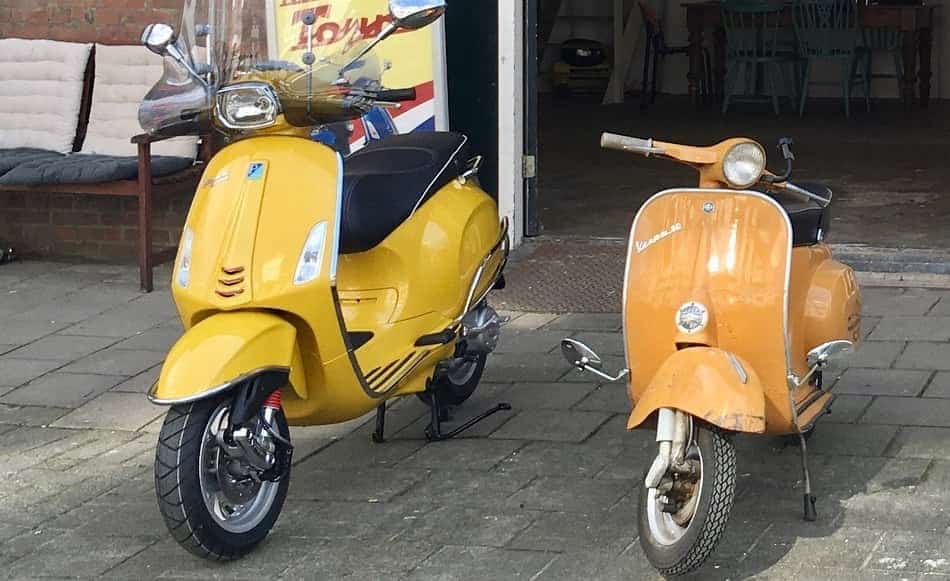
You can ride as many miles as you like with your Vespa but it depends if your Vespa is brand new or already used. When your Vespa is brand new then it’s best to take it easy.
For the first 625 miles (1005 km) you should break in your Vespa first. This means that you must not use full-throttle and vary your speed, the engine parts have to settle. When you ride a used Vespa, you can ride it as long as you want as long as you’ve followed the maintenance schedule.
Driving a Vespa on the freeway or highway for miles on end is very doable when the weather is fine but it’s boring too. It is better to take the backroads with plenty of things to see, that’s what the Vespa life is about.
In Italian ‘La Vespa’ is a feminine noun. So going for a ride on a Vespa is like taking a lady out for a date.
There is also a huge difference between being an experienced Vespa driver or an inexperienced driver. It’s like going to the gym or not. If you’re used to driving a motorbike or scooter, then you’re fine for hundreds of miles but if you’re new best is to get into it slowly. Your body has to get used to driving and not all of your ‘muscles’ are trained yet.
When riding your Vespa many miles a day, we recommend making many pit-stops along the way, mostly after every hour. You can do some stretching, walk around, eat something and drink plenty of water.
When touring on my Vespa, I enjoy taking the smaller roads and never go more than 62 miles (100km) a day. Funny enough, driving a classic or a modern Vespa can be tiring at the end of the day. While the saddles are made for comfort, after half a day of driving, my butt just hurts too much. This is with a classic and a modern Vespa
If you don’t have much time for breaks in between, then it’s best to get yourself an Airhawk or a Wehope seat. These seats can prevent injuries and can make your ride a lot more comfortable. They come with multiple air pockets and can make a huge difference. You can place them on top of your seat, and you can pump them to your desired level. Don’t expect to get it right on your first ride, but just make adjustments along the way.

